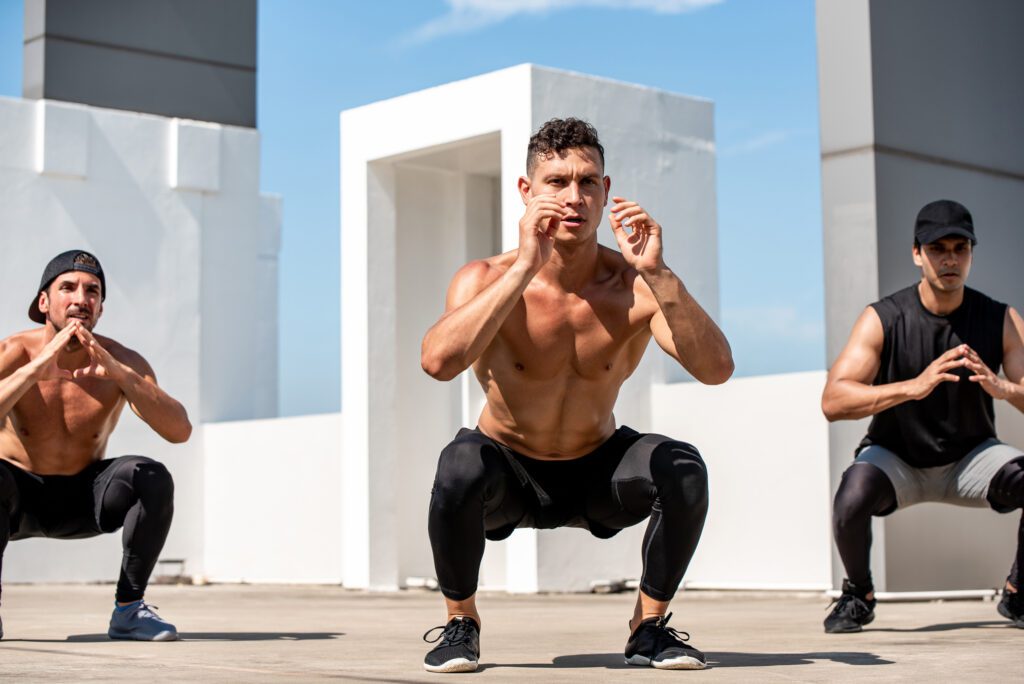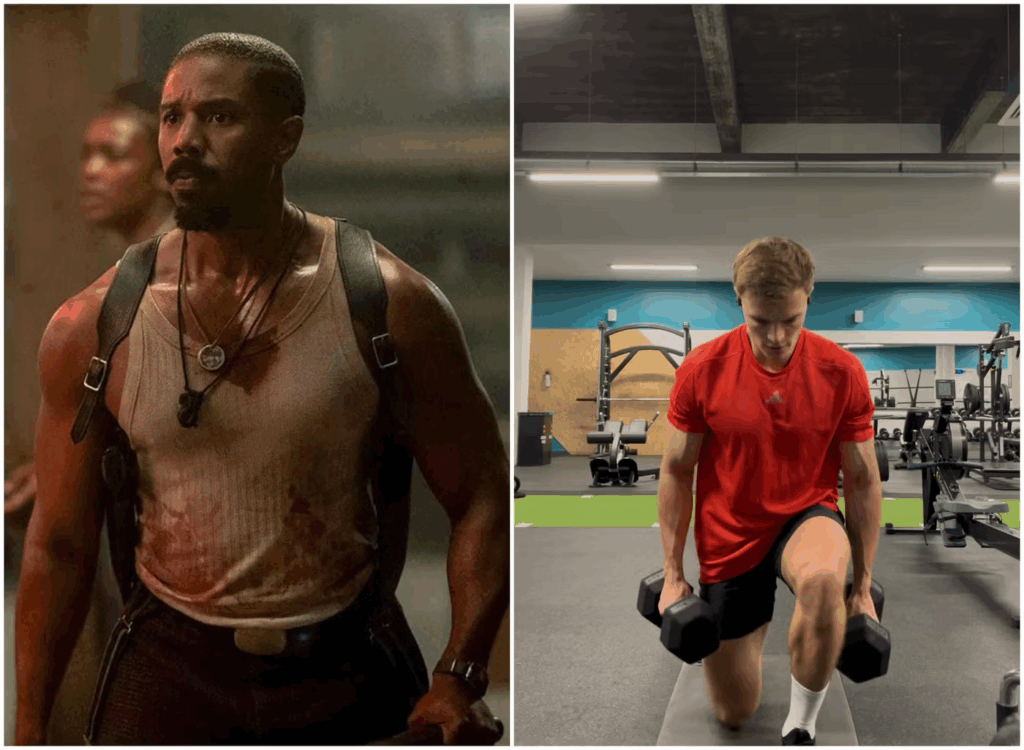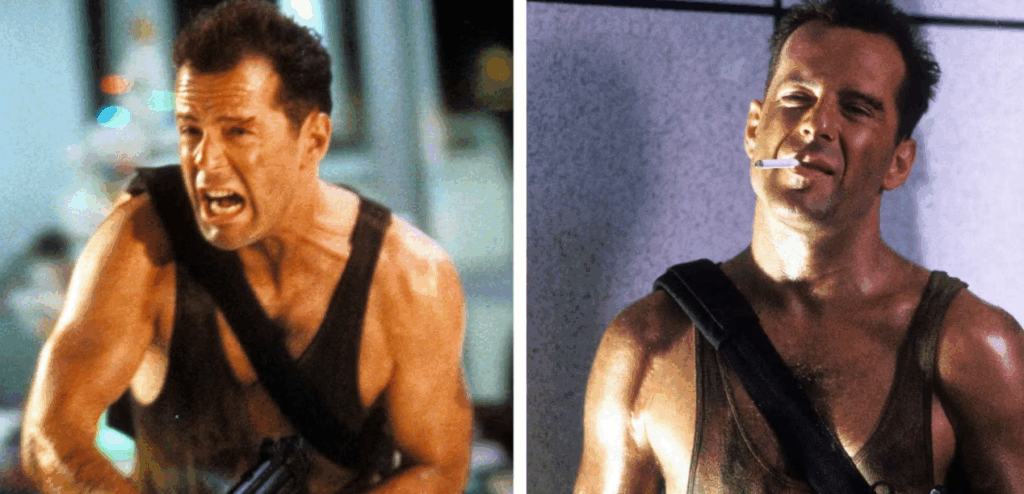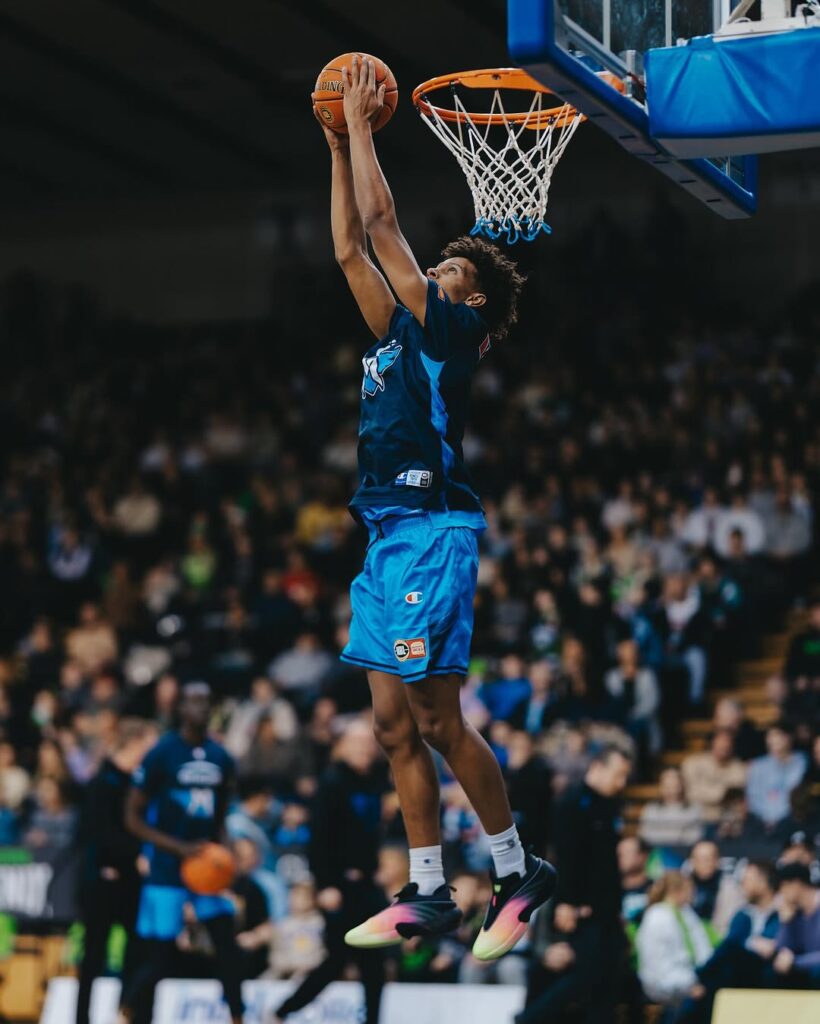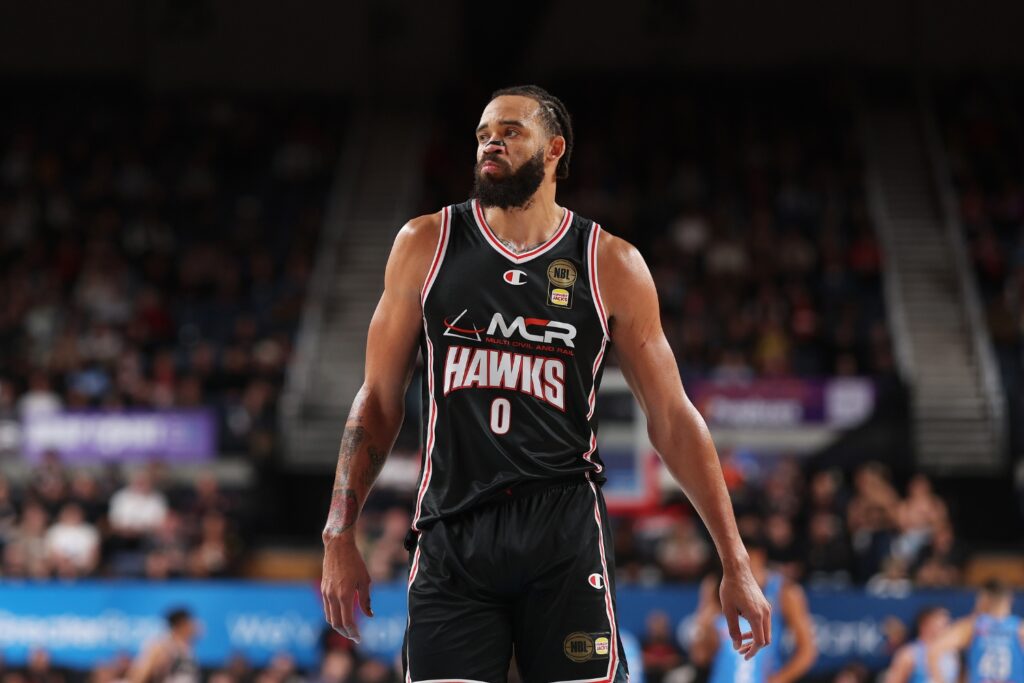POWERLIFTING IS PRIMAL. Just the thought of loading a barbell with enough iron to make it bow and then, somehow, finding the strength to press it off your chest, drive it out of a squat, or deadlift it off the floor is sufficient to stir the blood and unleash beastly growls. The sport can be seen as the ultimate test of weight room strength, challenging you to see how much metal you can move in one maximal effort. If you’ve ever thought of dipping your toes in the sport, you’re in luck – there’s never been a better time to get started.
Once practiced almost exclusively in niche gyms, powerlifting is increasingly finding its way into mainstream gym culture, helped in no small part by its exploding popularity on social media. But even if you aren’t captivated by Hafþór Björnsson’s seemingly superhuman strength or don’t scroll King of the Lifts obsessively, you’ve likely seen a growing number of people in your own gym chalk up and pit their power against massively loaded barbells.
That’s what’s most exciting to people who are passionate about the sport: it’s easier than ever to train for it. “It’s becoming accessible to everyone,” says powerlifting coach Brandon Morgan, who trains strength athletes at his two gyms, Strength Lab Performance Center (in Portland) and Saprogenic Strength and Conditioning (in Vancouver). “More and more training facilities are not only offering the necessary sport-specific equipment to do it [kilogram competition plates, specialty barbells, etc.], but they’re also hosting meets.”
Ready to give powerlifting a go? Read on to learn more about the sport and how to become a competitive participant.
What is powerlifting?
The roots of powerlifting date back to at least ancient Greece and Rome (and likely much earlier) with competitions that measured feats of strength, but the goal has remained the same throughout history: Move as much weight as possible in a series of specific lifts. As gym culture became more prominent in the 1950s and 1960s, rules for the sport were codified. The International Powerlifting Federation (IPF) was founded in 1972, and USA Powerlifting (USAPL) came in 1981. Today powerlifting revolves around the barbell and three exercises: the squat, bench press, and deadlift.
Known as the “Big Three,” these lifts are the sole and entire focus of the sport. During competition, athletes get three attempts to achieve a single rep for each exercise, and their heaviest successful attempt in each one is added together to determine their final score. If you squat 365 pounds, deadlift 475 pounds, and bench press 300 pounds, your score—known as a “total”—is 1,140, for example (although in actual competition, those scores would be recorded in kilograms).
Competition categories are organized by weight, gender, and age, although there is also a “best overall” category for each gender that recognizes the strongest individual pound-for-pound (i.e., the person with the best score relative to bodyweight and regardless of age).
How powerlifting works
Powerlifting might seem simple—after all, you’re gunning for your best one rep max in three classic lifts, without any other events or aspects of competition. But the rules governing how you perform those lifts are tightly regulated.
During a competition, the referee calls out commands to standardize the key phases of each lift. For the squat, these are “start” to engage in the lift, then “rack” to return the bar to the rack. Bench press has three commands, “start” to begin the movement, “press” to push the bar off your chest after it’s come to a complete stop, and “rack” to return the weight to the rack. Deadlift has just one command, “down,” to control the bar back down back to floor after lockout.
If you start too soon or rack too early, that attempt won’t count, for example. You also can’t go down in weight once you’ve declared for for your first attempt, so if you start too heavy, you’re screwed. On top of that, there are also different types of governing rules to consider—“equipped” allows the use of supportive devices such as squat suits and bench shirts (which can help to lift more weight) while “raw” does not (only lifting belts, wrist wraps, and single-ply knee sleeves, by USAPL rules).
“The bottom line is that powerlifting is a weird sport filled with nuances that are difficult to understand and navigate until you gain a lot of experience through training and competition,” says Morgan. “That’s why it’s helpful to begin with an experienced coach if you’re serious about it.”
Similarly, it’s helpful to belong to a gym frequented by other powerlifters. In recent years, that’s become easier too, because more and more people are embracing powerlifting as strength training in general has become more popular. Instead of heading straight to a specialized powerlifting gym (often local, non-chain), you can often find powerlifters training in all kinds of gyms, from clubs like Life Time and Equinox to chain gyms like Crunch.
“Training with buddies who are also competitors is key,” says Morgan, explaining that they can be a tremendous source of motivation, accountability, and consistency—three factors critical to success.
“When you feel you’re ready to compete, start by researching nearby events [in your state],” he adds. “That way, you can make sure that competing is right for you without investing too much time and money in travel.”
Train for powerlifting like you compete
Prioritising the Big Three lifts in your training program might seem like common sense – but according to Morgan, lots of competitors get caught up in overcomplicated regimens. “Believe it or not, many guys go into their first meet without squatting, benching, or deadlifting very much,” he says, explaining that they focus too much on “accessory” moves (more on those in a bit). “Practice the Big Three first and foremost – the more you train them, the better you’ll perform in competition.”
In practice, that means doing the barbell back squat, bench, and deadlift at least once a week with competition commands, says Morgan, referring to the movement cues called out by referees during each lift.
“Also, train with the equipment you’ll use in competition, such as kilogram plates instead of pound plates, and record yourself so you can analyze your form and dial in your technique,” advises Morgan. “The latter is critical – mastering movement quality [proper form] is hands down the best thing you can do to maximize your numbers.”
The keys to proper form for powerlifting exercises
Want to come correct to the lifting platform? Here, Morgan shares competition-specific tips for the Big Three lifts you can use to get stronger. These tips are specific to how you would approach each of these exercises to lift as much weight as possible, so keep that in mind as you put them into practice. If your goal is to build muscle, there are other cues to follow that will prioritize that objective.
Back squat
- Start with the bar across your upper back so that it’s positioned directly over the arches of your feet. “I should be able to draw a line from the caps [ends] of the barbells to the middle of each foot,” says Morgan. “Having the bar farther forward can throw you off balance and increase your risk of injury.”
- Go through a complete “stability sequence” before unracking. “Make sure your spine is neutral, engage your lats, and ‘pack’ your head,” suggests Morgan, explaining that you want to tuck your chin, creating as many “chins” as possible.
- After you unrack the bar, take three steps back. “Some people do a two-step walkout, but for 90 percent of lifters, a three-step walkout is optimal,” says Morgan. “After each step, pause for a beat—rushing is a recipe for ruining optimal positioning.”
- Once you’ve completed your walkout, splay your toes in your shoes and press them downward as if you’re trying to grip the floor. Also, keep your ankles aligned with your feet. “‘Rooting’ your feet in this way boosts stability and maximizes force production,” says Morgan. “Any time your brain senses any instability in your feet, it will reduce muscle fiber recruitment throughout the rest of your body, compromising performance.”
- Take a deep “360 degree” breath as if you’re trying to fill your entire torso—front, sides, and back— with air from the bottom up. “You want to create expansion and rigidity throughout your trunk,” says Morgan. “This will increase your stability and performance exponentially.”
- Brace your core. “Imagine someone is about to punch you in the gut,” says Morgan. “In so doing, you’ll contract all the right muscles to increase trunk stability.
- Initiate the movement by pushing your hips back slightly (as if you’re closing a door with your butt). Known as the “hip hinge,” this action is essential for maximizing stability, power production, and control in not only the squat, but also the deadlift.
- Don’t over-focus about keeping your chest up. “As you lower yourself, act like someone is pulling your shirt forward,” says Morgan, explaining that will help keep your back flat. “Your chest should fall forward a bit—trying to keep it up increases anterior pelvic tilt, which sabotages stability, increases lumbar stress, and elevates your risk of injury.”
- Keep your ankles stacked over your feet, not rolled inwards. “Imagine there’s a resistance band around your ankles, and that you have to press outward against it to keep them aligned properly,” says Morgan.
Bench Press
- Align yourself under the bar properly. “You want your head under the bar,” says Morgan, explaining that the bottom of your chin to the top of your upper lip is the “golden range.”
- Unrack the bar using your triceps. “A lot of people do it by protracting [pushing up with] their shoulders,” says Morgan. “That’s a mistake—it makes you lose your arch and sabotages stability and power.”
- Maintain the arch in your back. “You want your back arched throughout the entire movement,” says Morgan. “Lose that, and everything else falls apart.”
- Don’t bounce the bar off your chest. “You want to kiss your chest with the bar,” says Morgan. “Letting it sink into your chest at all will throw off your form and reduce your ability to press it back up.”
Deadlift
- When you push your hips back (i.e., hinge) to get into position to grip the bar, do so slowly. “Grabbing the bar hastily encourages lumbar flexion [instead of neutrality],” says Morgan. “When that happens, your deadlift is DOA.”
- Distribute your weight evenly throughout each foot. “You don’t want to be back on your heels or forward on the balls of your feet,” says Morgan. “It’s critical that you stay centered and balanced.”
- Squeeze the bar until your fingers turn white. “That’s when you start the lift,” says Morgan. “You want your hands glued to the bar.”
- Don’t pull up on the bar too quickly. “You want to slowly build tension in the bar, taking the slack out of it gradually,” says Morgan. “Create a nice bend in the bar before you pull it off the floor; if you don’t, you’ll be pulled forward.” You should feel a slight click when you’ve pulled the slack out of the bar, as the top of the bar makes contact with the plates attached to it.
- Push your big toes into the floor. “This will help keep you from rocking back on your heels, which is one of the most common mistakes in deadlifting,” says Morgan. “It’s critical that the load is distributed evenly throughout each foot.”
- Finish tall. “Don’t finish leaning back,” says Morgan. Yes, you want to thrust your hips forward as you lift the bar—but stop short of overextending them. “Finishing tall will give you a better lockout,” he adds.
Don’t forget your accessories
Training the Big Three will be the bread and butter of any powerlifting program, but to maximize your strength and performance, you also need to incorporate “accessory” exercises. These are complementary moves that either work the sport’s most important muscles (glutes, quads, hams, pecs, tris) from different angles or target the muscles that support them. Here are a few to get you started.
Squat accessory
Front Squat
Why: Powerlifting focuses on the back squat, but if you want to optimize your performance, you need to add front squat variations to your training program to give your quad muscles some focused attention. “Back squats tend to emphasize the glutes and hams,” says Morgan, “so you need to do front squats to make sure you maximize strength in the front of your legs.”
Deadlift accessory
Straight-Leg Deadlift
Why: “A lot of people have a tough time keeping their hips high in the traditional deadlift,” says Morgan. “The straight leg deadlift will train you to maintain that good hip height and not drop them too low.”
Bench press accessories
Close-Grip Bench Press
Why: “Most people instinctively use a very wide grip in the bench,” says Morgan, explaining that doing so cheats your ability to strengthen your triceps, which are key for any pressing movement. “Performing the close-grip bench press will nail your triceps, greatly improving your strength in the top half of the movement.”
Overhead Press
Why: Adding this exercise to your training program will help you build delt strength. “That’s important because it will help you produce more power at the bottom of the movement, pressing the bar off your chest with more force,” says Morgan.
This article originally appeared on Men’s Health US.
The 10 Best Powerlifting Gyms in Sydney
Use self-talk before heavy lifts for instant strength boost, says science – here’s how








